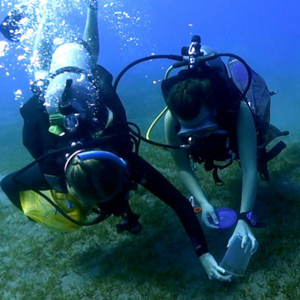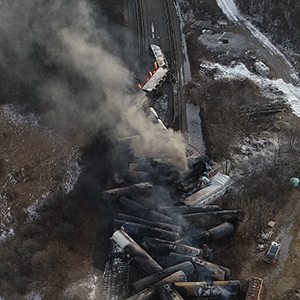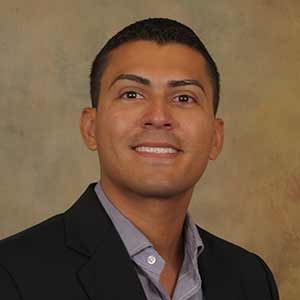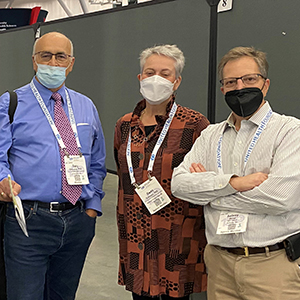NIEHS staff joined colleagues from the National Institute of Allergy and Infectious Diseases (NIAID), the University of Minnesota (UMN), and Chiang Mai University (CMU) to convene the Fourth Annual International Conference on One Medicine One Science (iCOMOS) in Chiang Mai, Thailand February 11-14.
More than 370 attendees from 35 countries, including clinicians, researchers, journalists, economists, public health professionals, students, and others, explored global health issues at the intersection of human, animal, and environmental health.
NIEHS Health Science Policy Analyst Kimberly Thigpen Tart, J.D., and Scientific Program Officer Heather Henry, Ph.D., served on the event’s scientific planning committee. “A big part of our goal was to bring the institute’s expertise in the human health aspects of the relationship between animals, humans, and the environment — also known as One Health — to the meeting program,” she said.
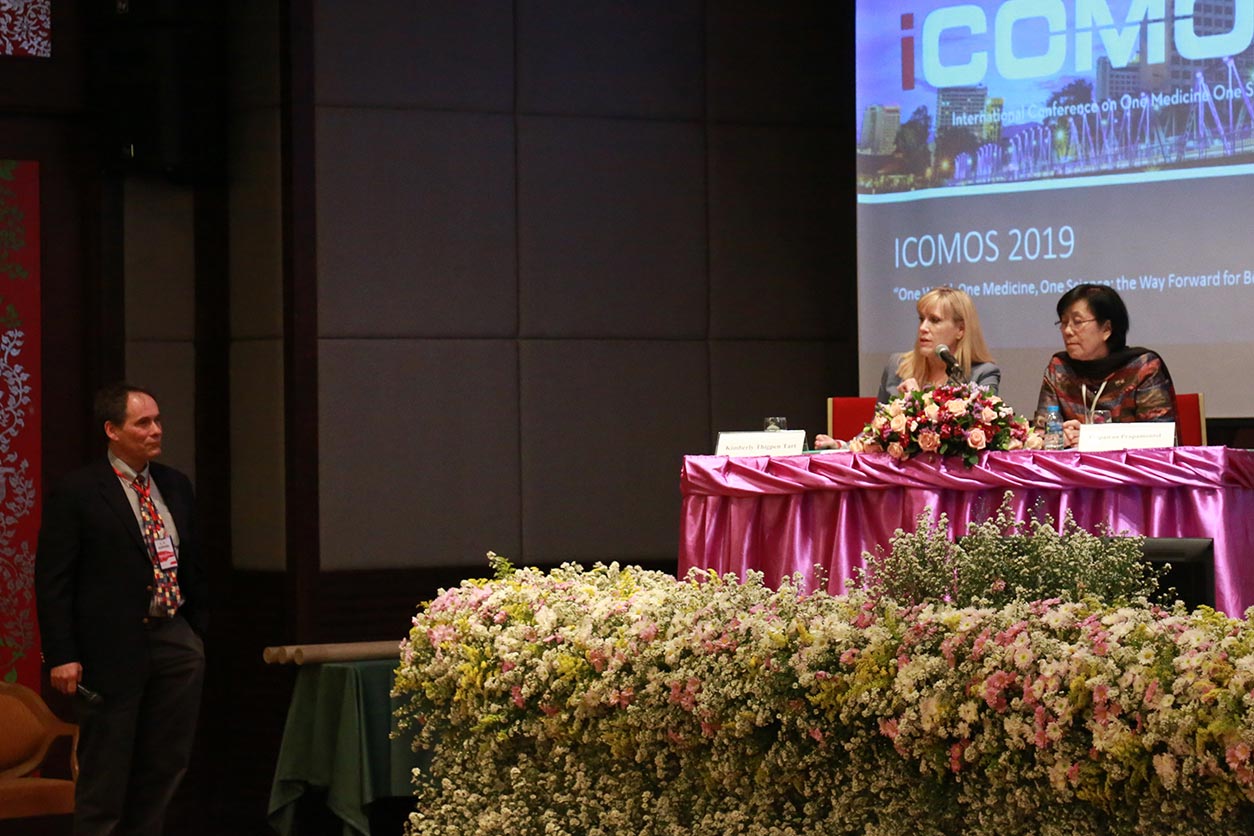 From left, Bruce Alexander, Ph.D., from UMN, answered a question from panel co-chairs Thigpen Tart and Tippawan Prapamontol, Ph.D., from CMU, about connections between the environment and one health. (Photo courtesy of CMU)
From left, Bruce Alexander, Ph.D., from UMN, answered a question from panel co-chairs Thigpen Tart and Tippawan Prapamontol, Ph.D., from CMU, about connections between the environment and one health. (Photo courtesy of CMU)Srirama Rao, Ph.D., founding executive director of the global Consortium on One Medicine One Science and the conference, encouraged the attendees to focus on societal issues that are interconnected and globally relevant. “The greatest global health problems we have can only be solved [in] an interdisciplinary manner,” said Rao.
Pollution, disasters, and research
In a panel presentation on environmental health, William Suk, Ph.D., head of the NIEHS Hazardous Substance Research Branch, highlighted pollution as a major contributor to disease. He acknowledged the challenges of teasing out all the components and their related health effects. Suk is in Thailand on a six-month Fulbright Global Fellowship.
NIEHS Senior Medical Advisor Aubrey Miller, M.D., teamed with colleagues for a discussion on vital research to address disasters and emerging threats. He was joined by Juli Trtanj, from the Climate Program Office of the National Oceanic and Atmospheric Administration, and Pornpitak Panlar, D.V.M., from the Ministry of Health in Thailand.
 From left, Trtanj, Miller, and Panlar discussed lessons learned from disaster management experiences. (Photo courtesy of CMU)
From left, Trtanj, Miller, and Panlar discussed lessons learned from disaster management experiences. (Photo courtesy of CMU)Miller highlighted the importance of post-disaster research in informing future preparedness and response. Thailand and the Southeast Asia region regularly experience extreme weather events, such as heat waves, floods, typhoons, air pollution crises, and others.
“Timely post-disaster data collection is critical to understanding long-term health implications of these kinds of events, particularly for vulnerable populations,” Miller said. He underscored the importance of establishing disaster preparedness networks that include people from multiple disciplines and backgrounds.
Collaboration paves the way
 Panelists from around the world led the Climate Change and Disaster Research to Improve Disaster Management session. From right, Sampan Singharajwarapan, Ph.D., from CMU; Panlar; Miller; Trtanj; and Shailey Prasad, M.D., from UMN. (Photo courtesy of CMU)
Panelists from around the world led the Climate Change and Disaster Research to Improve Disaster Management session. From right, Sampan Singharajwarapan, Ph.D., from CMU; Panlar; Miller; Trtanj; and Shailey Prasad, M.D., from UMN. (Photo courtesy of CMU)Disaster research response (DR2) discussions continued in an interactive session organized by Thigpen Tart and Miller. Among the U.S. and Thai researchers and public health professionals who made presentations were individuals from the NIEHS-funded GEOHealth Hub at Mahidol University in Bangkok.
Miller highlighted the importance of taking advantage of previous work and relationships when planning new studies. “Successful disaster response can occur through sharing information and understanding what people have already accomplished through research and network building,” he said.
A compelling example of this was provided by Paskorn Champrasert, Ph.D., a computer scientist at CMU. He devised an improved flood early warning system and provided it to vulnerable villages. Residents now work with him to maintain the devices and share the data.
NIEHS DR2 program collaborator Shoji Nakayama, M.D., Ph.D., from the National Institute of Environmental Science in Japan, shared ways in which NIEHS is successfully collaborating with other countries to build research skills and develop strong working relationships that will improve global disaster research response.
In addition to Japan and Canada, Thailand is enthusiastic about possibly developing its own DR2 program for the Southeast Asia region.
(Brittney Olivia Baumert is a Ph.D. student in Environmental Health Science at Emory University.)

From left, Prapamontol; Noboru Minakawa, Ph.D., from Nagasaki University; Suk; Alexander; and Thigpen Tart led a panel discussion on ecosystem and environmental health, as well as community development.





